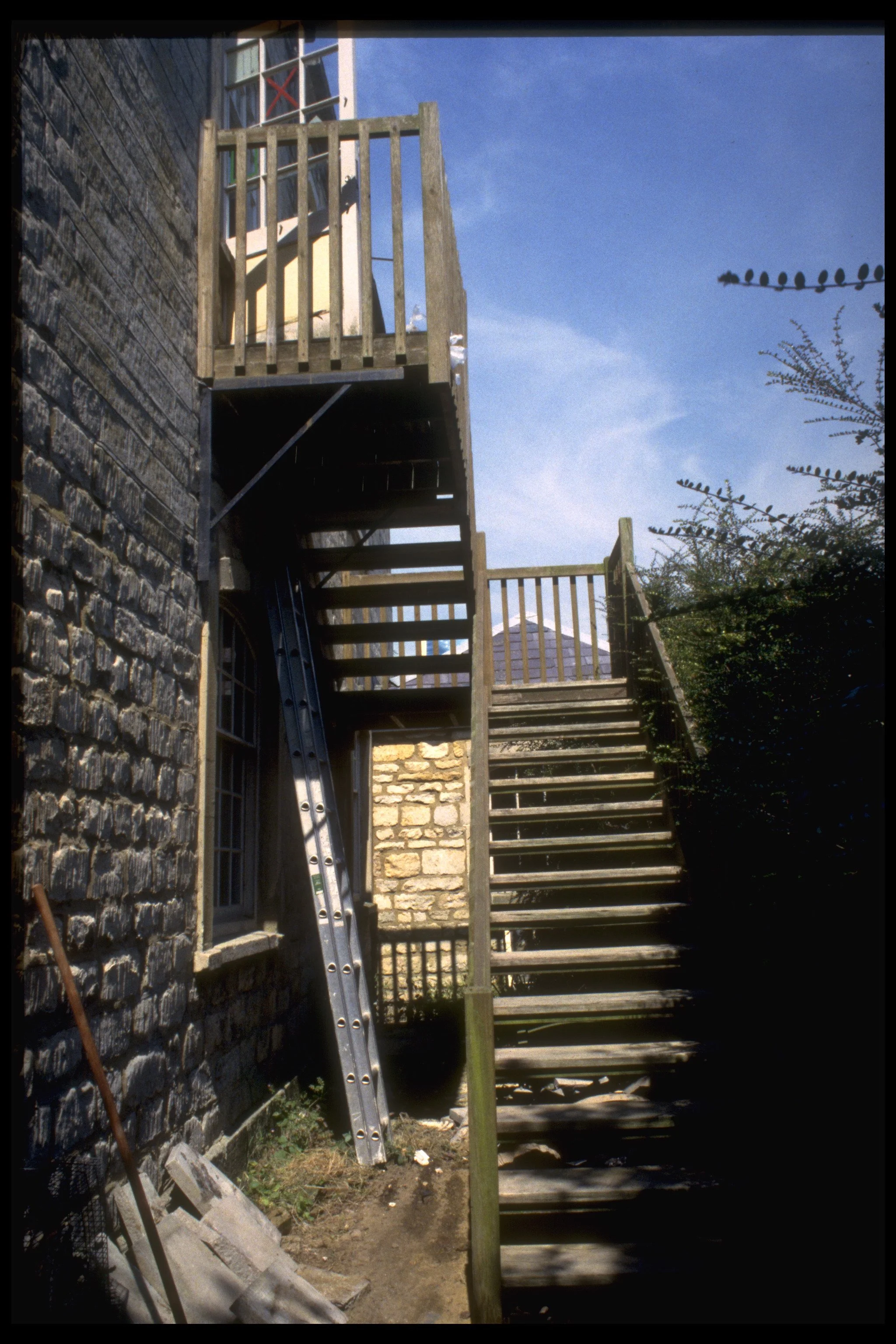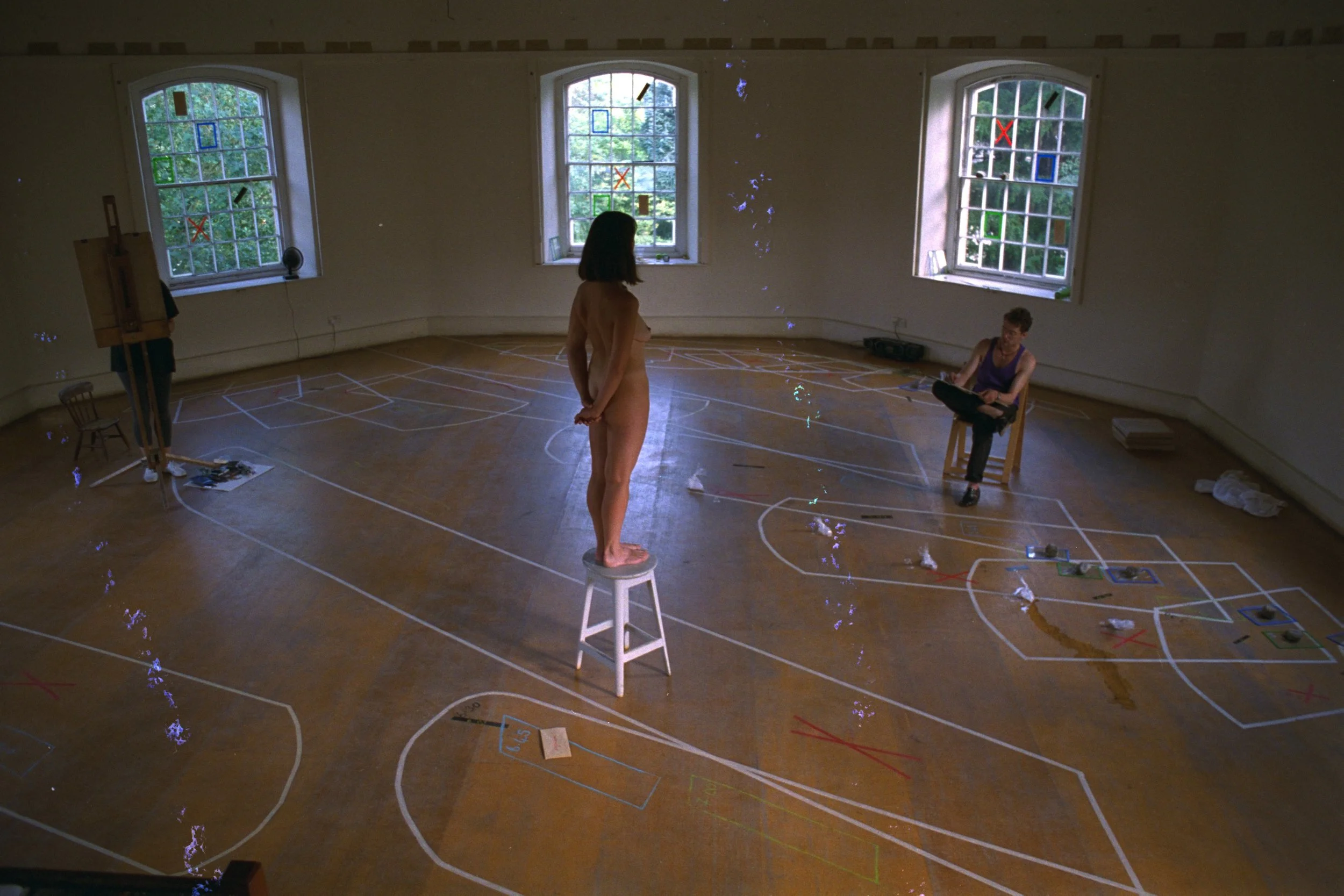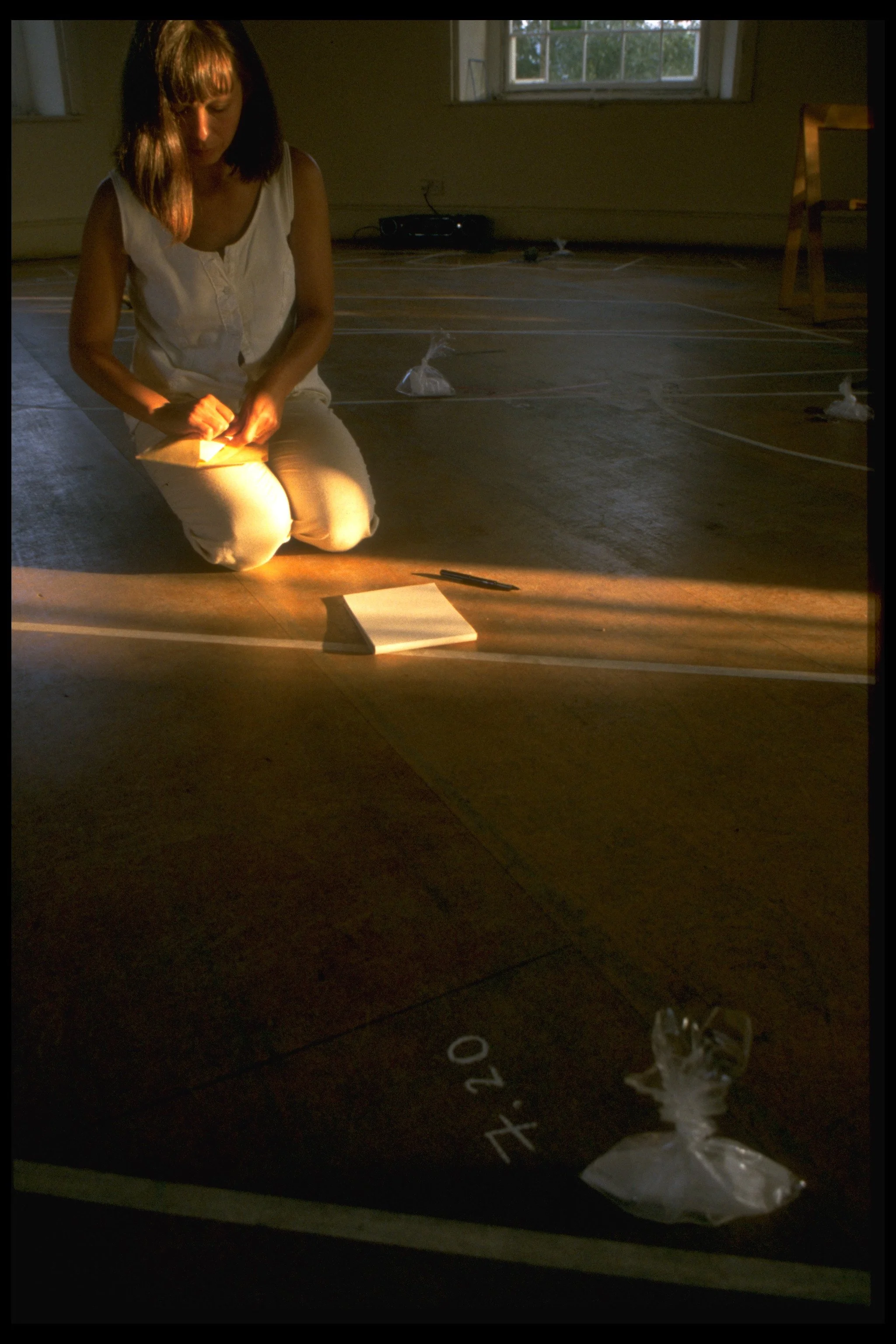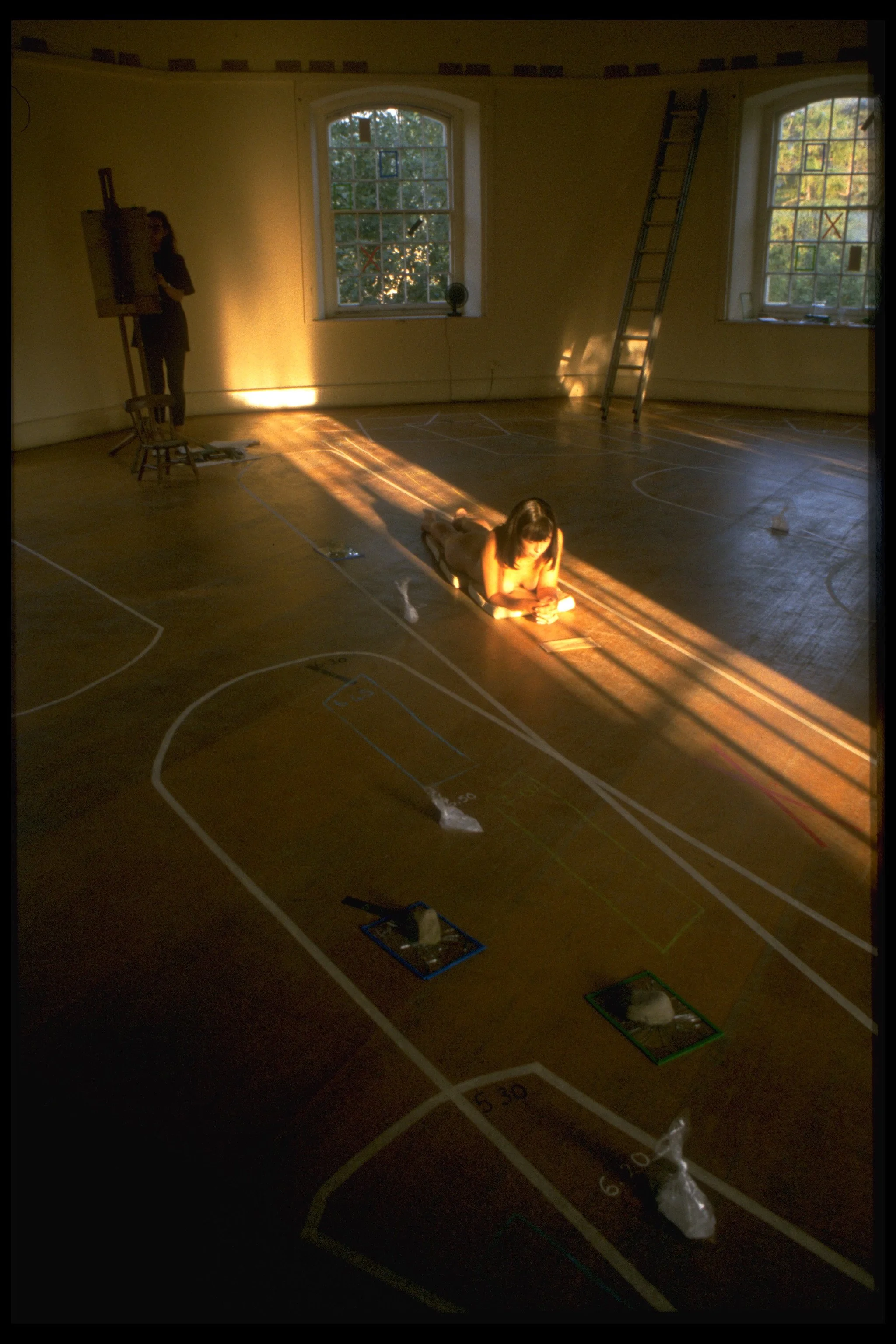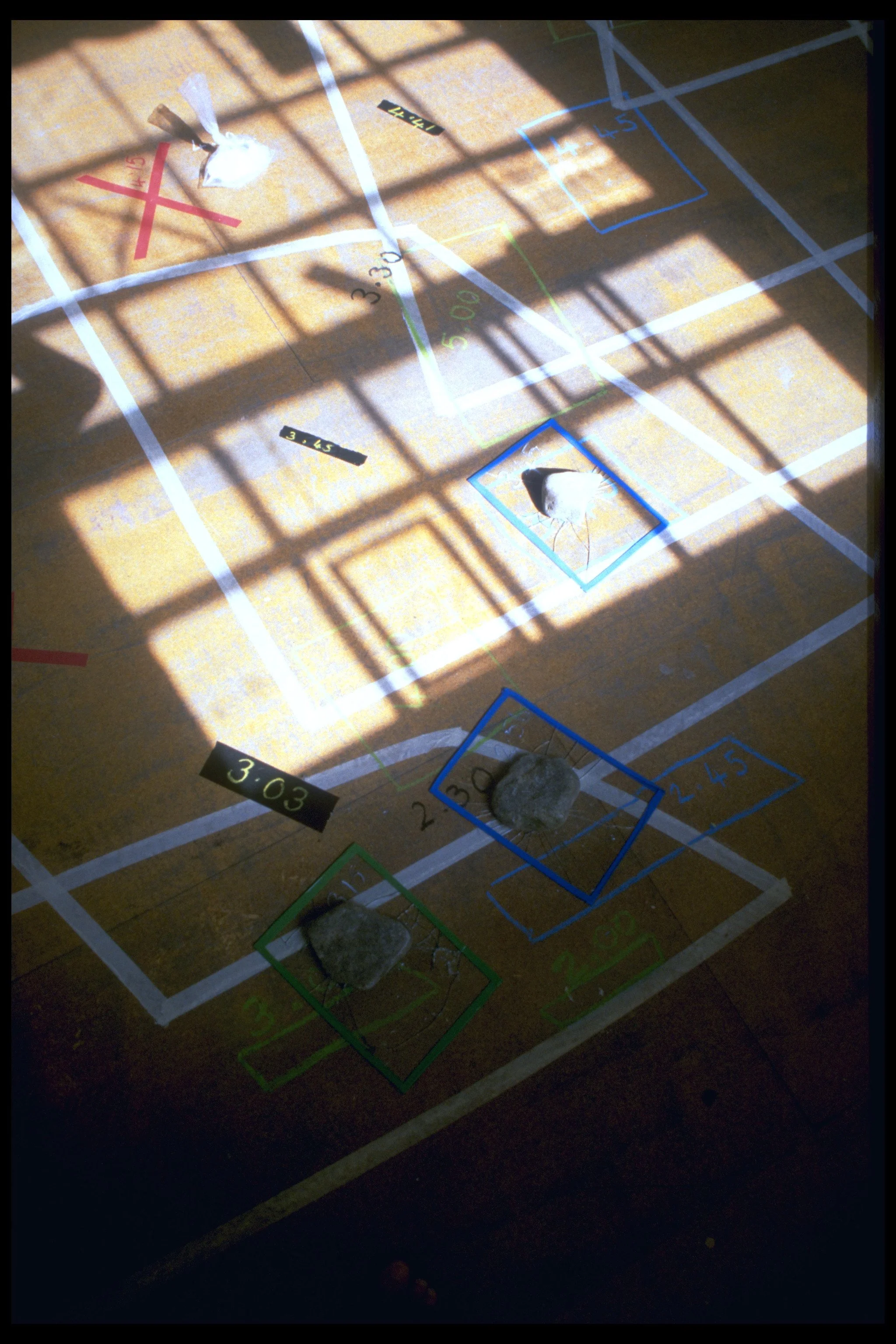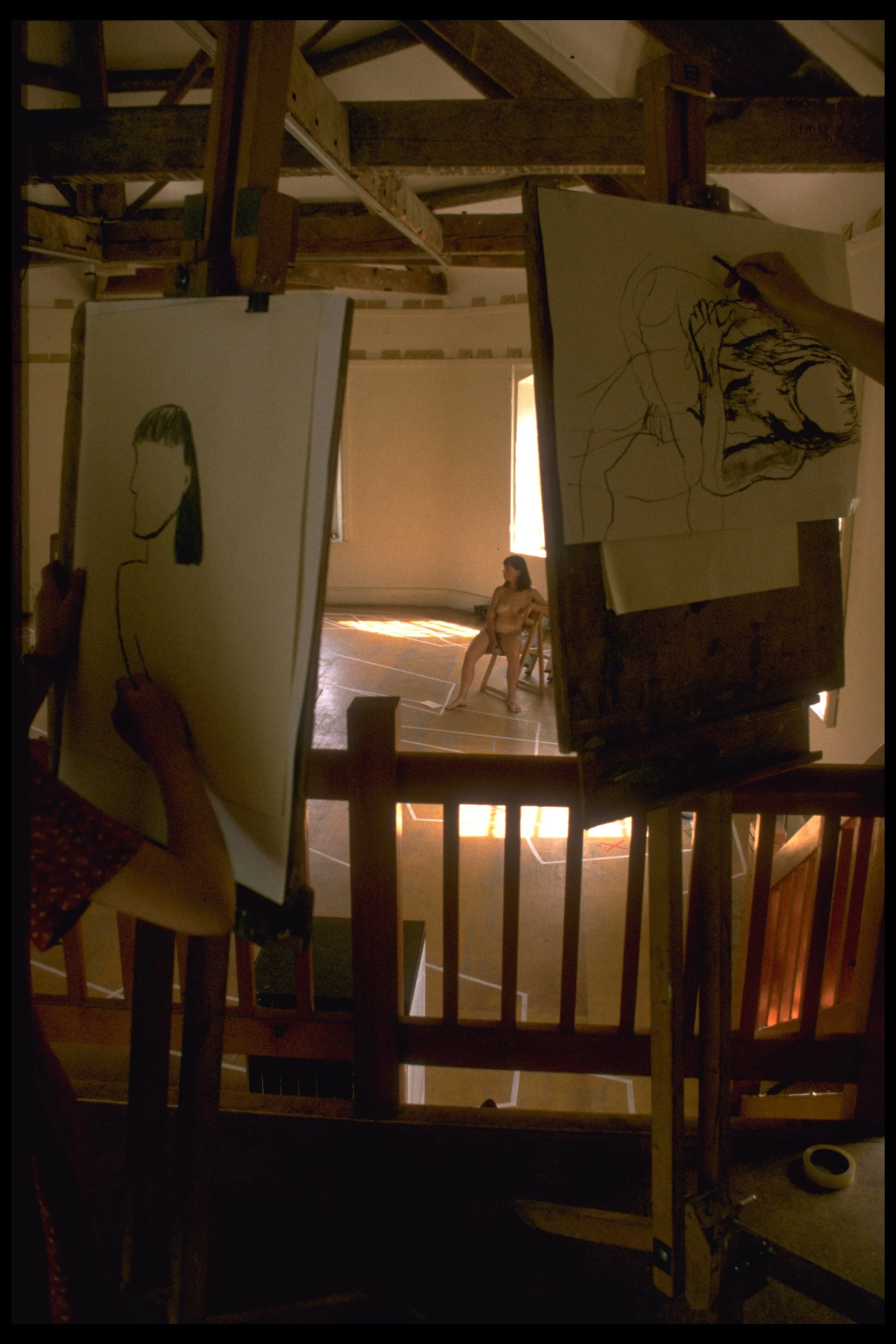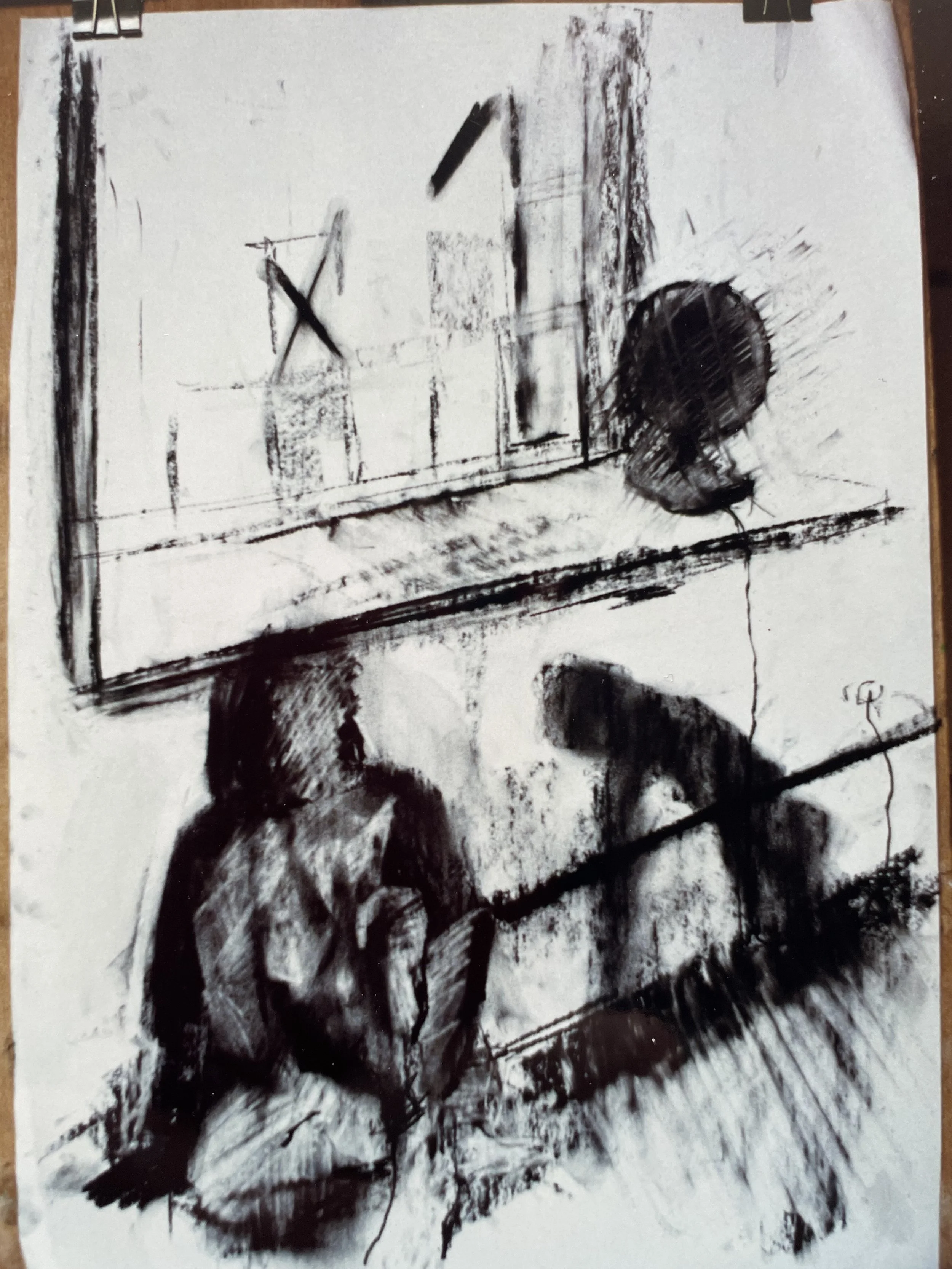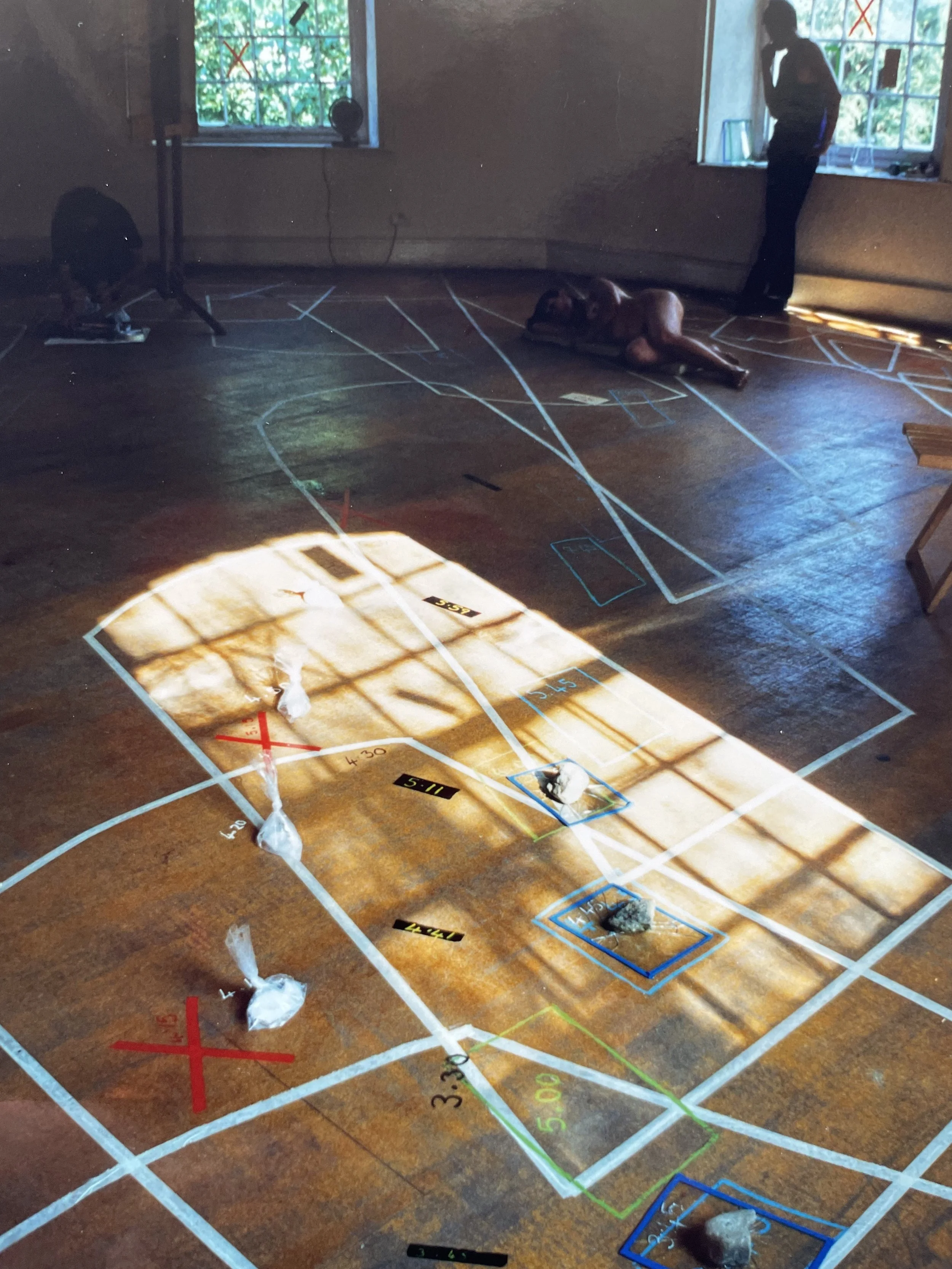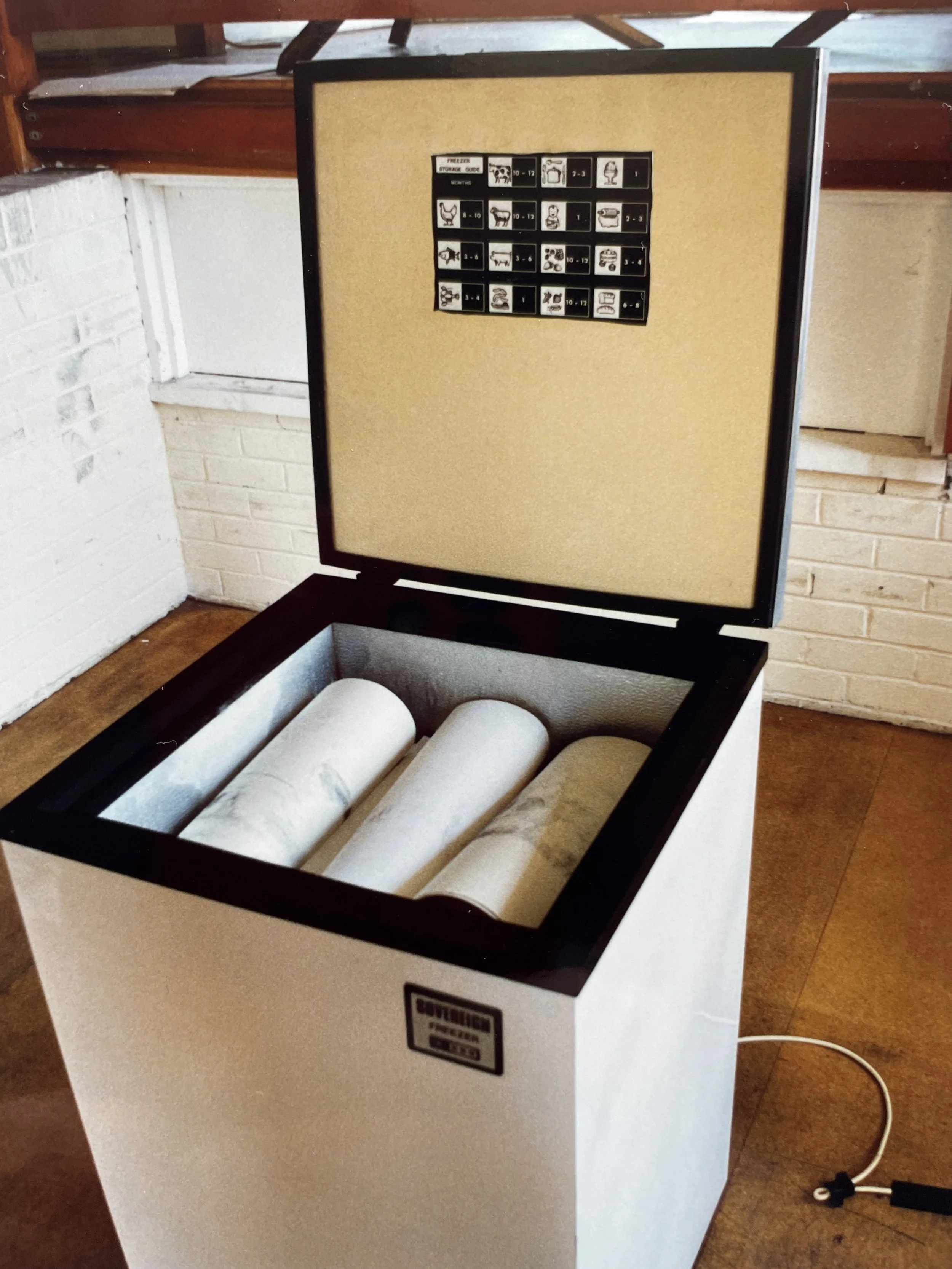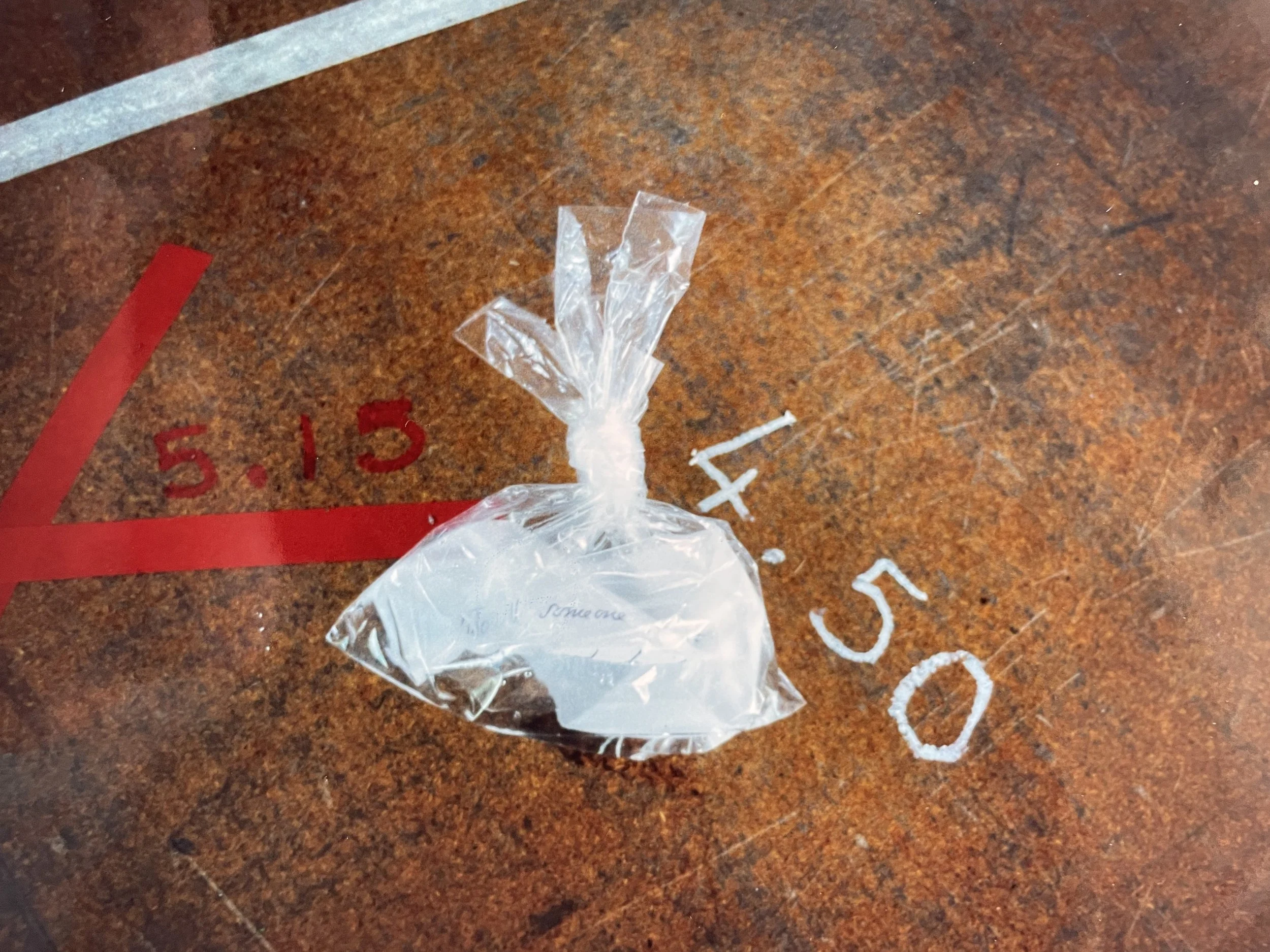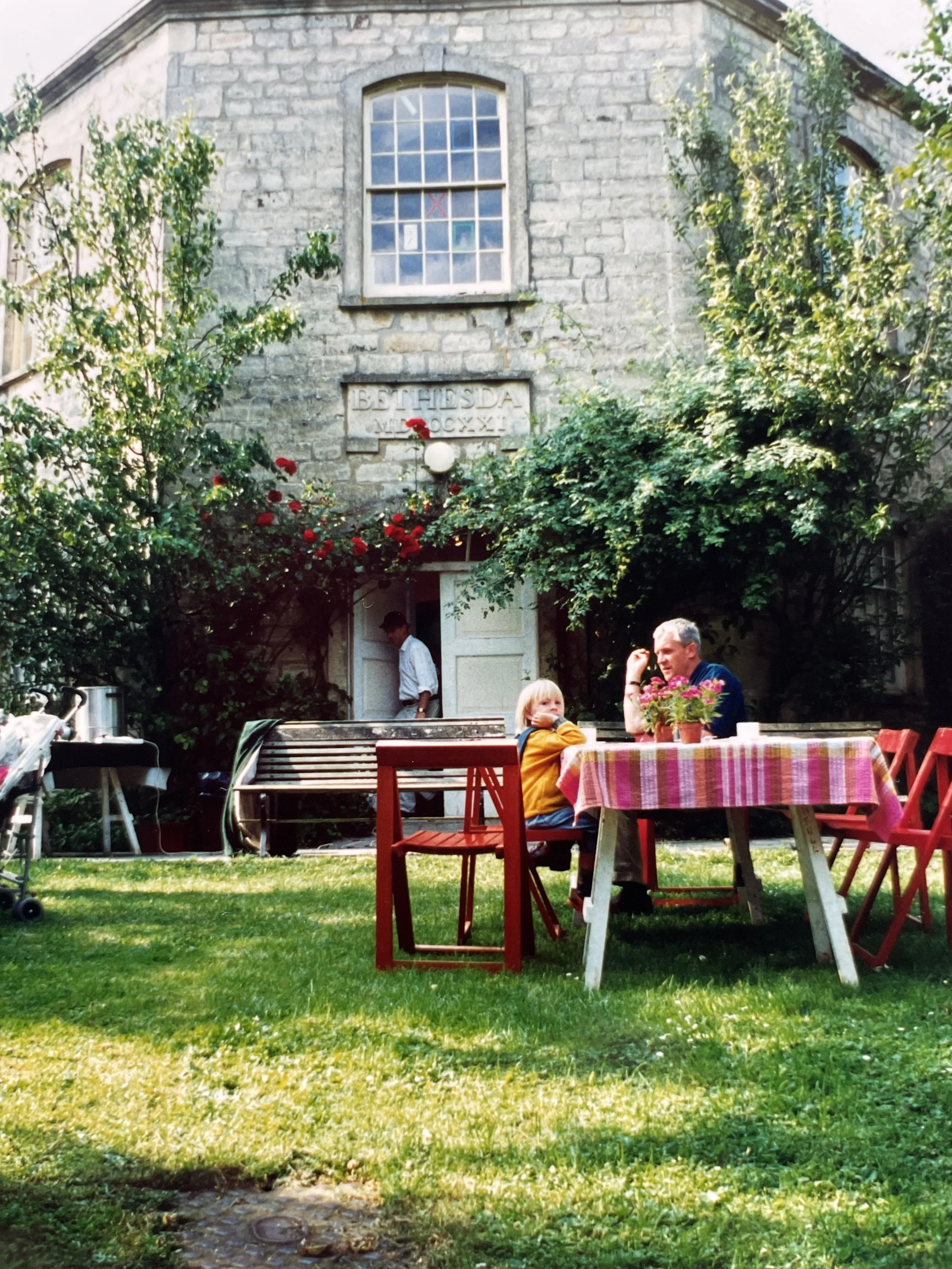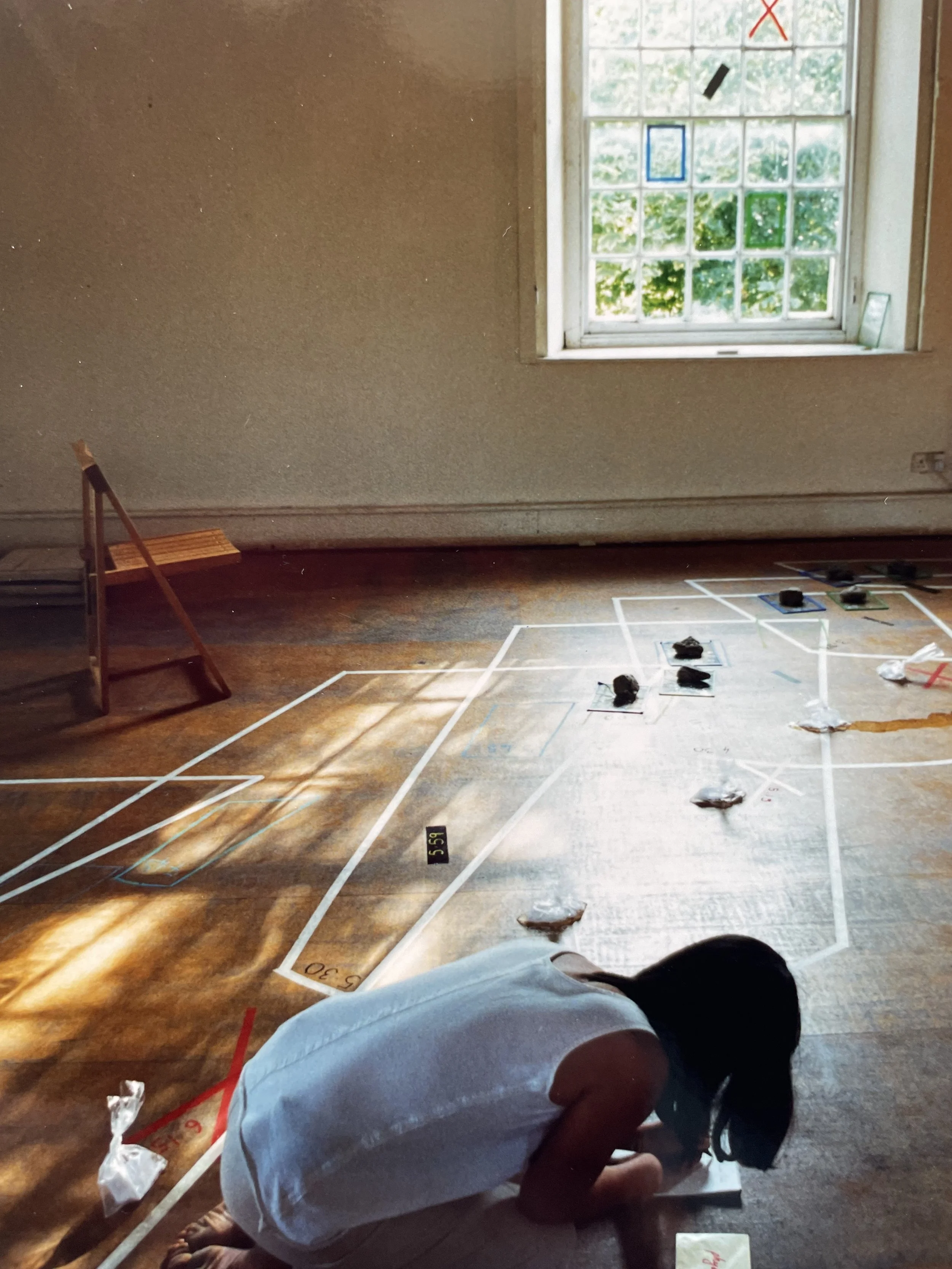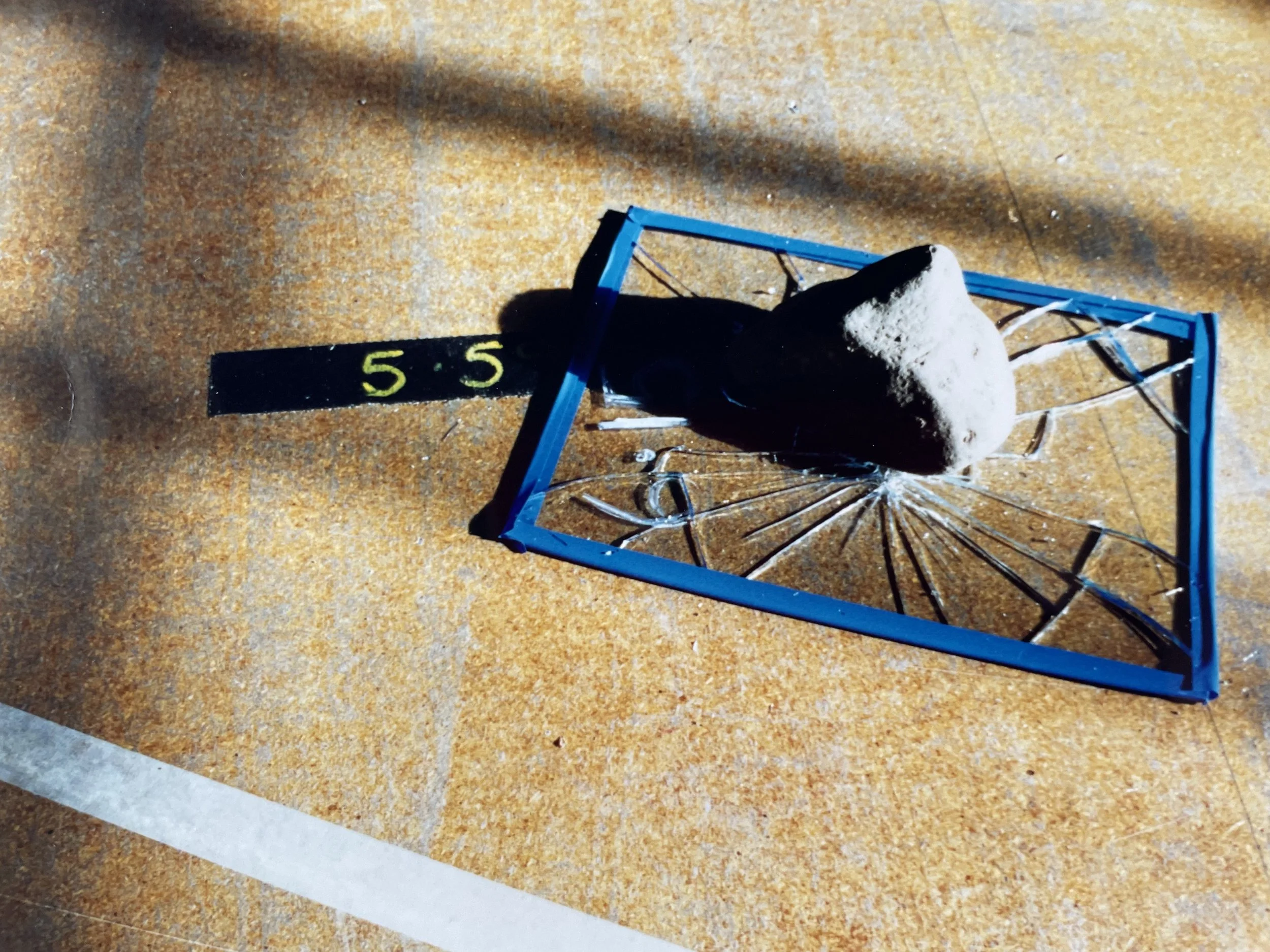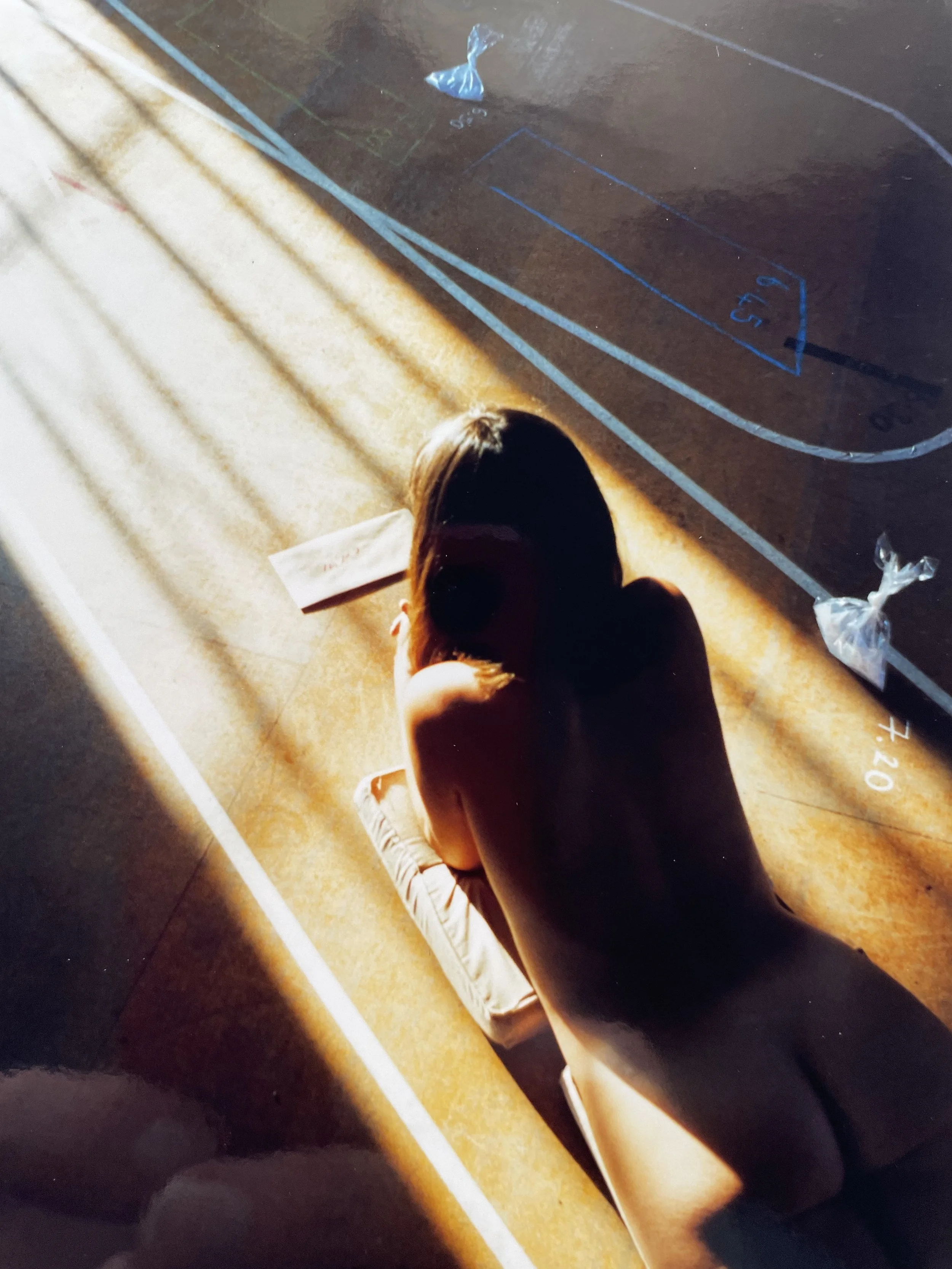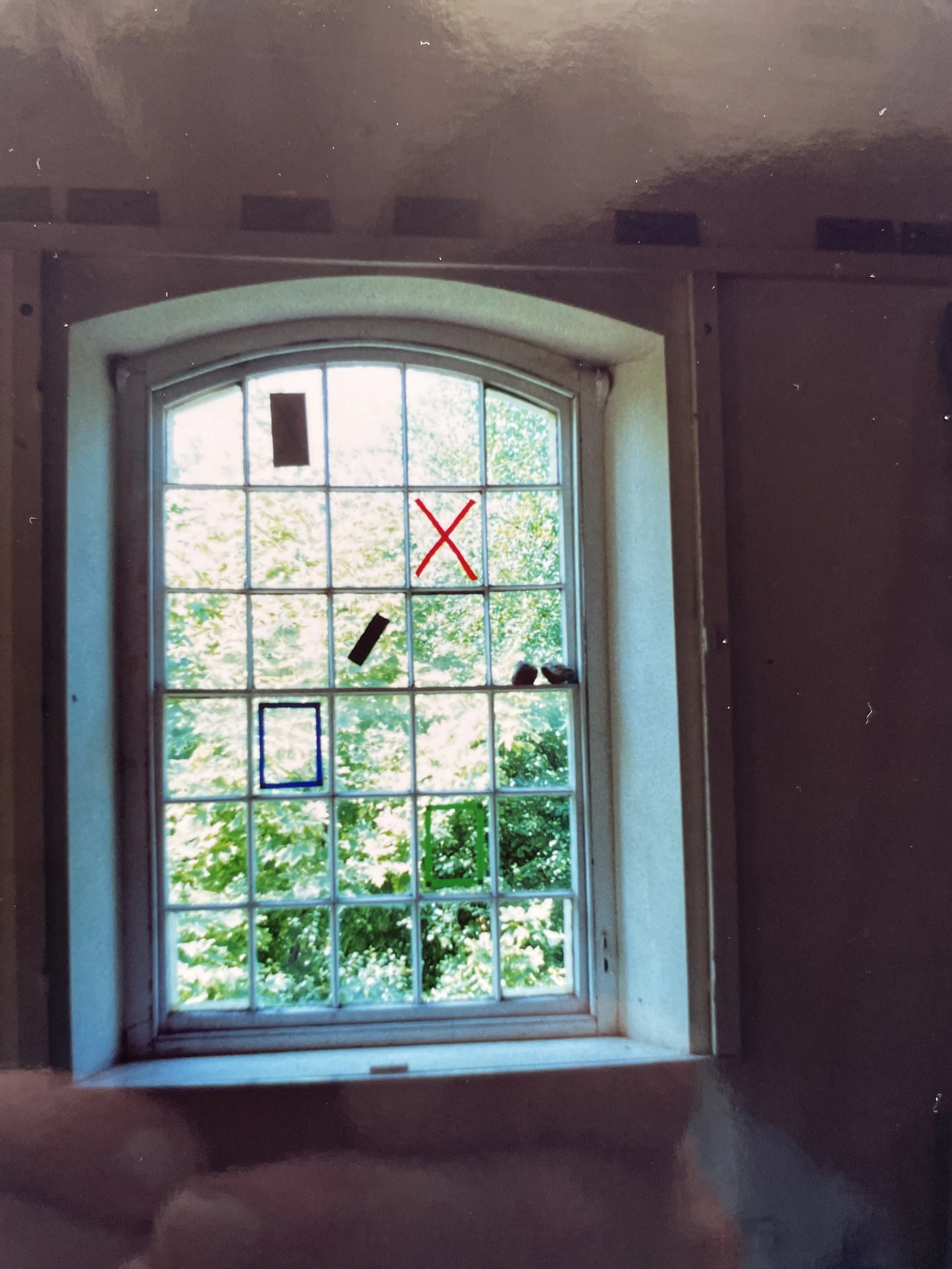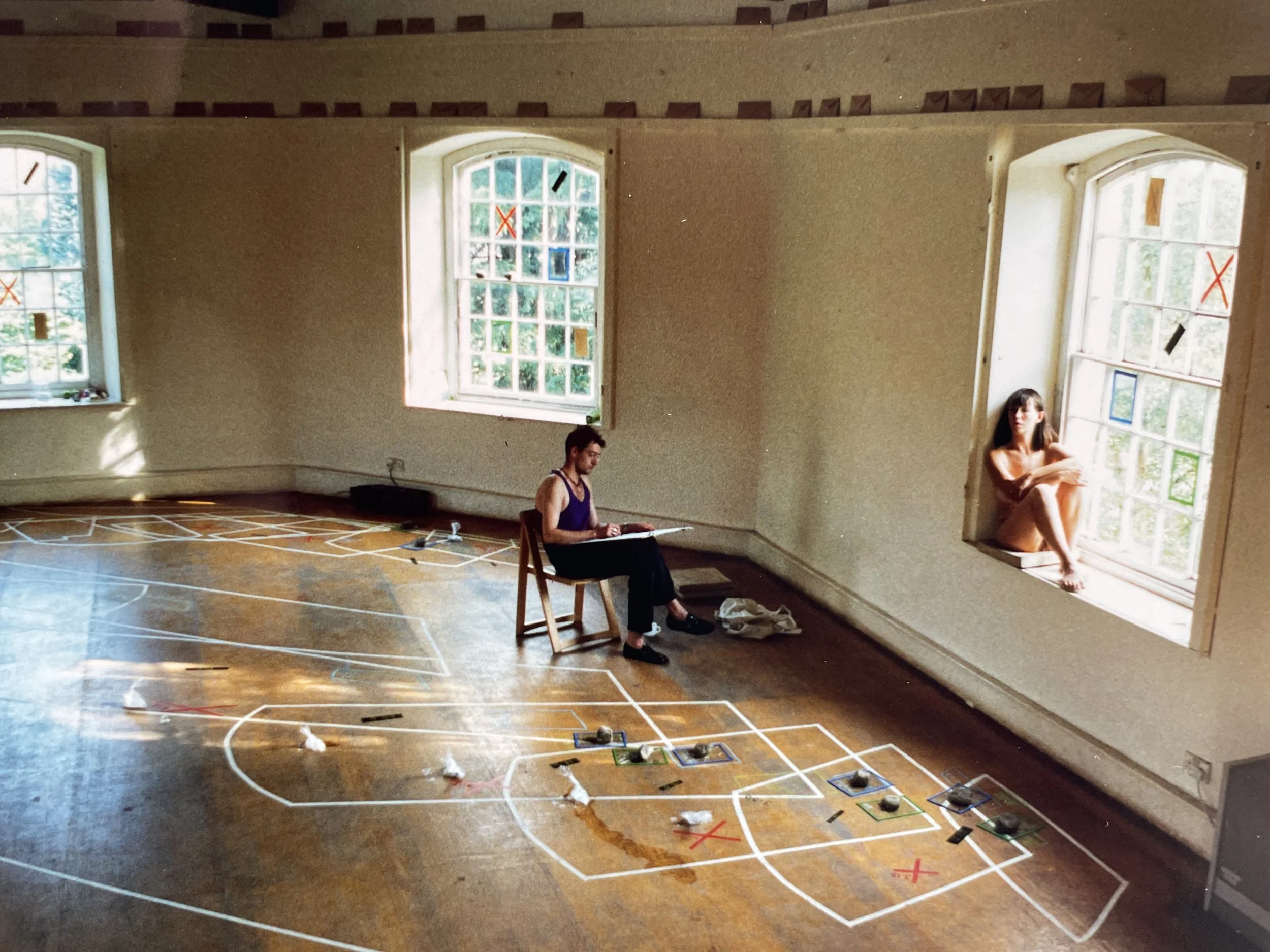THE ZWILLINGE PROJECT EPISODE 7 UPSTAIRS
... more than anything else the day raised questions about the nature of the art work - not a question of art, but a question of what are the conditions and processes of art, the work of art: what is brought into view, what is drawn to the attention of the viewer, what materials are placed against or with each other, where are the borders, edges and closures of the work? The site itself - Prema Arts Centre, a former place of prayer - is significant as the focus of the work; an architectural space that literally provides a transforming focal point - the nine windows of the upstairs room framing the passage of light inside the room from dawn to dusk, a journey mapped by the artists every fifteen minutes onto the floor - a light and reflective room that also frames the nine half hour episodes of the piece.
The work draws our attention to what is or is becoming absent, to what is referred to - through the prayer, the votive offering, the wish-lists, the previous episodes of the Zwillinge collaboration, the drawings of the artist's model (which in itself indicates the complex set of references outwards, where no relationship is entirely as transparent and immediate as it seems at first sight). But it is not just the formal elements of the work that fascinate - the envelopes, the windows, the poses of the Life Model , the map of light, and so on that operate like the topoi or places of a complex memory-system (a system for who to remember what?) that holds in a spatial relation our hopes, fears, and expressions - but the informal aspects of the piece that fascinate as well.
red blue green black and yellow insulating tape, 9 small rocks, 9 window panes, brown envelopes, 2 freezers, water, plastic bags, chalk, easels, a ladder
organisation of a life class, 13 fifteen minute poses, writing, smashing glass, marking the space, conversations
additional performers: Marilyn Marshall and John Hayward
The day is hot. Cream teas are being served on the lawns below the upstairs room, a quintessentially English expression which always seems (in memory) to accompany cultural events and links sport, landscape, art, and horticulture in an activity whose rules are reassuringly familiar. The signs of 'art' - the artist's model, (the artist as model - for where else is the artist in this work?) the easels and charcoal, the steady stream of drawings that emerge from the hands of the (other) artists who respond to the gradually shifting light in the room, to the subdued methodical actions of the Life Model and her Life Class Organiser - all point to the familiar: the work of art. But the familiar is not enough for some of those who drink tea on the lawns below, where murmurings of incomprehension, of not-knowing-what-to-say, or how to react, are too quickly lost in the warmth and balminess of a summer's afternoon. For how many really care to open up to the more complex and disturbing elements of what is occurring upstairs - the gradual trail that follows the fading light, the remains of the day, the traces of vision, the scored and recorded body of the Life-Model, the chest-freezers standing sentinel on ether side of the inner stair, the envelopes that doubly ring the walls of the room above the nine windows,the wish-lists frozen in bags of water, the stones and broken panes of glass that litter the floor?
The wooden fire escape that lead upstairs has a text burnt into its steps: 'I have this awful habit of assuming that everyone is like me, and must like me have the same hopes, dreams and desires, but they are too afraid to admit to them'. The inscription is taken from a letter to the Zwillinge Project from Bill Stevens of Hull who for the last ten years has been keeping a list of all the things that he would like to achieve or experience during his lifetime. He keeps this list on top of his wardrobe and until this performance nobody, not even his wife, knew about it ....
Ric Allsopp
Writing Research Associates UK
